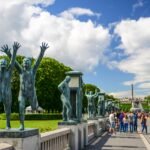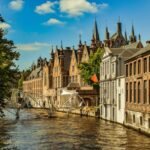Introduction to Moscow
Moscow has always been the political center of Russia. The city’s layout mirrors its status in the country, radiating outward from the center like a series of rings, with the Kremlin at its core. The Kremlin has long been the working place for Russia’s top leaders throughout history, giving it deep symbolic importance. Nearby, in Red Square, you’ll find Lenin’s Mausoleum and the Tomb of the Unknown Soldier—memorials that evoke the glorious days of the Soviet era. Both Red Square and the Kremlin sit at the heart of the city, within the innermost ring known as the “Boulevard Ring.” The second ring, called the “Garden Ring,” is where most of the city’s key attractions are found. Beyond the third ring, tourists rarely venture, and the fourth and outermost ring, the MKAD, stretches for 108 kilometers, outlining the city’s entire perimeter.
Moscow is also one of Europe’s most famous tourist destinations. Thanks to its extensive green spaces, it’s sometimes called the “Capital in the Forest.” Among the leafy streets, you’ll find old Stalin-era buildings with massive bases and sharp spires, alongside modern skyscrapers. The city streets are also home to countless statues of famous figures, reflecting Russia’s rich culture and long history, which has seen its fair share of conflict. These silent monuments offer a glimpse into the deep sense of national pride that defines the Russian people.
Personal Impressions
Russians are really friendly, quite the opposite of how the media sometimes portrays them. I didn’t encounter any shady characters trying to extort money by pretending to check passports. The police and ordinary people are very hospitable—if you have a question, they’ll definitely help you out. Young Russians on the metro mostly don’t listen to music or play on their phones. Instead, many of them are nose-deep in books, reading seriously. Much like in Western and Northern Europe, if you cross the street at a crosswalk, cars will always stop for you, no matter how fast they’re going—they’ll brake as soon as you step in front of them.
You often hear about the stark wealth gap in Moscow, and this time I saw it firsthand. In a span of just 400 meters, I saw two R8 sports cars and a Rolls-Royce Phantom parked side by side. Yet, at the same time, you can find people dressed in rags, huddled in underground walkways, clutching cheap bottles of vodka as they sleep.
Best Time to Visit:
The best time to visit Moscow is in early autumn or late spring (May and September). While Moscow summers don’t get “hot,” the sun can be pretty intense at times, so it’s important to protect yourself from UV rays.
Clothing Guide
When visiting Moscow, a windproof coat (with a hood and ideally waterproof) is a must, even in the summer, as there can be a noticeable drop in temperature in the mornings and evenings. If you’re planning to go after October, make sure to pack a down jacket or a good-quality insulated coat.
Compared to the grandeur of Saint Petersburg, this forest-surrounded city exudes a sense of majesty.
Architecture:
Moscow boasts the solemn and ancient Red Square, the vibrantly colored St. Basil’s Cathedral, and the Kremlin, often called the eighth wonder of the world. The intricate sculptures, detailed reliefs, and striking colors give these landmarks a fairy-tale-like quality.
Culture:
Whether you’re admiring wartime relics or paying tribute to literary giants, the city center is filled with countless museums, galleries, and memorials, both large and small, public and private. Even something as ordinary as a school or an office building has historical significance—perhaps once the estate of a duke or the private garden of a noblewoman.
In addition, Moscow has the most stunning metro system in the world, the charming Arbat Street, and mesmerizing night views. This ancient yet youthful city invites you to explore its hidden gems, where every corner holds the potential for a pleasant surprise.
Moscow is divided into 12 administrative districts, with most of the key attractions located in the Central Administrative District, which is further divided into 10 zones. The following guide highlights the main attractions, arranged counterclockwise for easy reference during your visit.
Red Square, the Kremlin, and Surrounding Areas
Red Square (Красная площадь)
Originally called “Torg,” meaning “marketplace,” Red Square was renamed in 1662 to “Krasnaya Ploshchad,” meaning “Beautiful Square.” Covering 91,000 square meters, it’s located at the heart of Moscow and serves as the central location for national celebrations and military parades. It’s one of the most famous squares in the world.
The ground of Red Square is unique, entirely paved with cobblestones, giving it an ancient and sacred feel. On the western side of the square, you’ll find Lenin’s Mausoleum, the red walls of the Kremlin, and three tall towers. A viewing platform was built on top of the mausoleum, where leaders stand during important ceremonies to oversee and guide the proceedings.
Between Lenin’s Mausoleum and the Kremlin’s red walls, there are 12 gravestones, including those of Stalin, Brezhnev, Andropov, Chernenko, and Dzerzhinsky, all prominent Soviet political figures. Stalin’s body was originally housed inside Lenin’s Mausoleum, but on October 31, 1962, it was removed and reburied behind the mausoleum.

St. Basil’s Cathedral
St. Basil’s Cathedral was built between 1555 and 1561, and what’s unique about its design is that every side is considered a “front”—there’s no distinct front, side, or back. In the center stands a church crowned with a tall spire, surrounded by eight smaller domes, each with its own vibrant colors and intricate patterns. These are topped off by nine golden onion-shaped domes, giving the cathedral its distinct look. The eight domes on the towers represent eight different saints, while the central and tallest spire symbolizes God’s supreme authority.
To ensure no other church like it would ever be built again, Ivan the Terrible cruelly ordered that all the architects be blinded, a horrific act that earned him the infamous title of “Ivan the Terrible.”
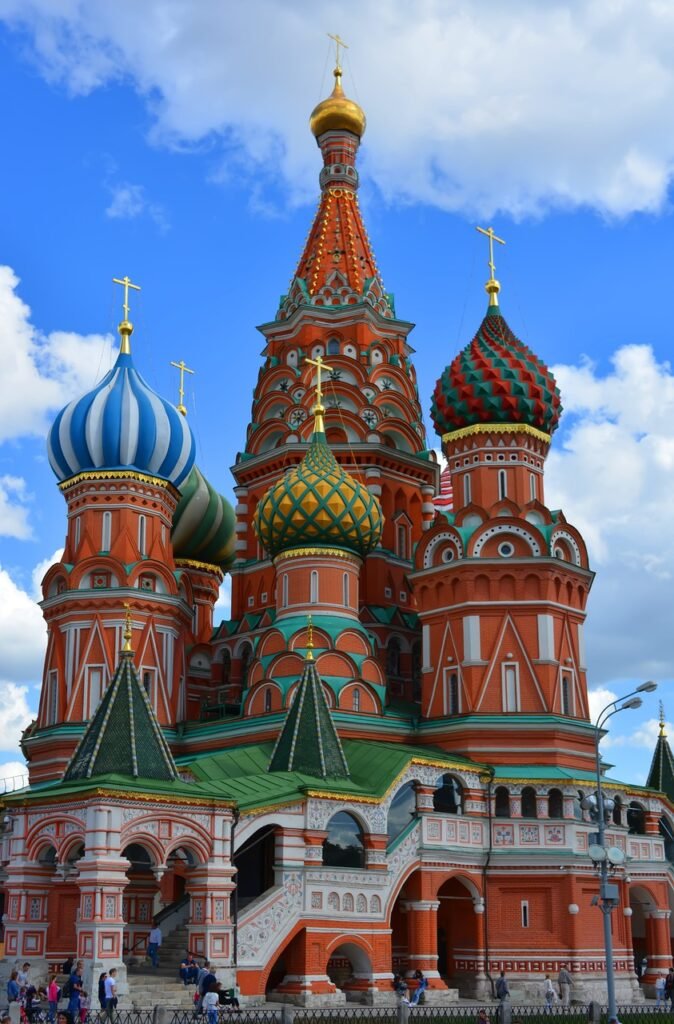
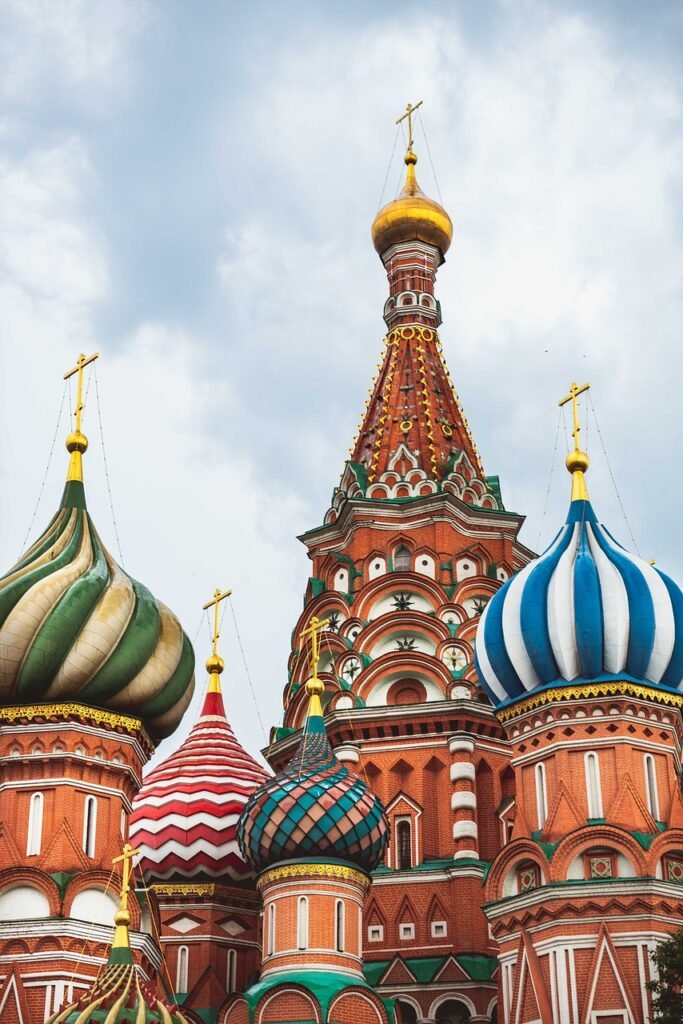
Inside the cathedral, almost all of the corridors and the empty walls around the windows and doorways of the smaller chapels are covered with 16th and 17th-century frescoes. The main hall is divided into two levels, which are now used as exhibition spaces. Some of the galleries display pictures and models that explain the cathedral’s architectural history and the changes it has undergone over the past four centuries.
One exhibit showcases the weapons and equipment used by the Russian army when they captured Kazan, one of the strongest fortresses of the time, in the 16th century. Next to a model of the Siege of Kazan is a detailed attack plan, showing the formation of Russian soldiers and their positions during the operation. The strategy is depicted with great accuracy, offering a credible glimpse into 16th-century military tactics.
Lenin’s Mausoleum
After Lenin passed away in 1924, he was laid to rest here. The mausoleum is constructed from red granite and black labradorite. Lenin’s body is draped with the flag of the former Soviet Union, and special lighting illuminates his face and hands, giving him a clear and peaceful appearance. His remains are placed in a crystal coffin and the mausoleum is open to the public at set times.
In the past, soldiers stood guard in front of Lenin’s Mausoleum, changing shifts every hour. However, at the end of 1993, this famous “Post No. 1” was removed and relocated to the Tomb of the Unknown Soldier nearby. Visitors interested in watching the changing of the guard can head there instead.
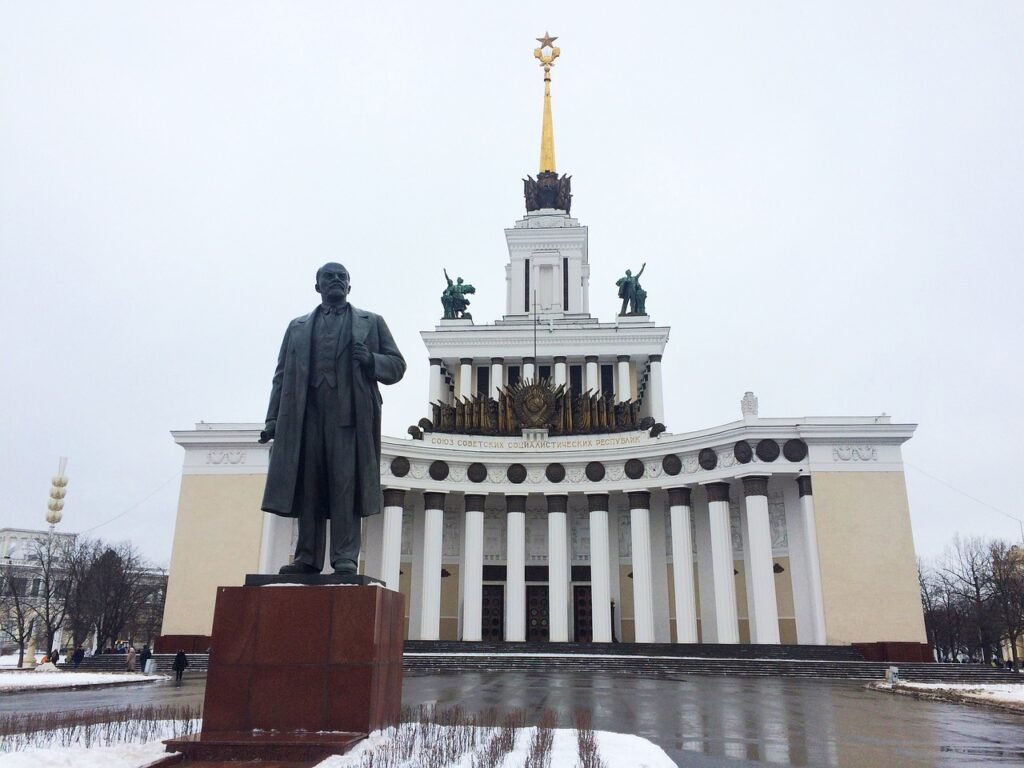
National History Museum
The National History Museum is located on the north side of Red Square and was built in 1873. This neoclassical building is also a landmark in Moscow. The museum houses a rich and diverse collection of exhibits and archival materials, showcasing various aspects of Russia’s political, economic, and cultural life, while providing a comprehensive introduction to the history and culture of the Russian people.
Inside, you’ll find the most complete and extensive collection of ancient coins, a vast array of archaeological artifacts, as well as weapons from Russia, the East, and some Western countries. The museum also features textiles, agricultural tools, wooden furniture, and other intricately carved and painted wooden items, along with ceramics and glassware. Additionally, there is a large collection of paintings depicting historical figures, events, characteristics, and architecture, as well as historical maps and archives on customs and traditions, including various manuscripts and rare books.
On the eastern side of the museum is the entrance to Red Square, marking the center of Moscow at “zero kilometers.” All road distances from this point are measured from here. Moscow’s nine train stations are named after their final destinations— for example, the station heading to Smolensk is called Smolensk Station— radiating outward from the city center. Clearly, there is a strong sense of centrality in Moscow.

State Department Store GUM
Located on the northeast side of Red Square, the GUM department store is a historic state-run shop established in the 19th century. During the Soviet era, its shelves were filled with medium-quality basic goods, and long queues were a common sight outside. Today, GUM has transformed into a bustling fashion landmark, boasting over a thousand branded stores and a number of vintage shops. However, prices can be steep, so it’s best to browse without expecting to buy too much, focusing instead on the architectural beauty of the building itself.
Rather than just a store, GUM resembles a palace, with its striking pale yellow façade in a classical European style harmonizing beautifully with the colorful churches nearby, creating a stunning view on Red Square.

The Kremlin
The Kremlin is located in the very heart of Moscow and serves as a symbol of the Russian nation. It is one of the largest architectural complexes in the world and a UNESCO World Heritage Site.
The Kremlin connects to Red Square to the southeast and has a triangular shape, featuring 19 towers that are unevenly distributed along its triangular walls. The most spectacular and famous of these is the Spasskaya Tower, known for its chimes. Five of the largest city gate towers and watchtowers are adorned with ruby-red five-pointed stars, which are commonly referred to as the “Red Stars of the Kremlin.”
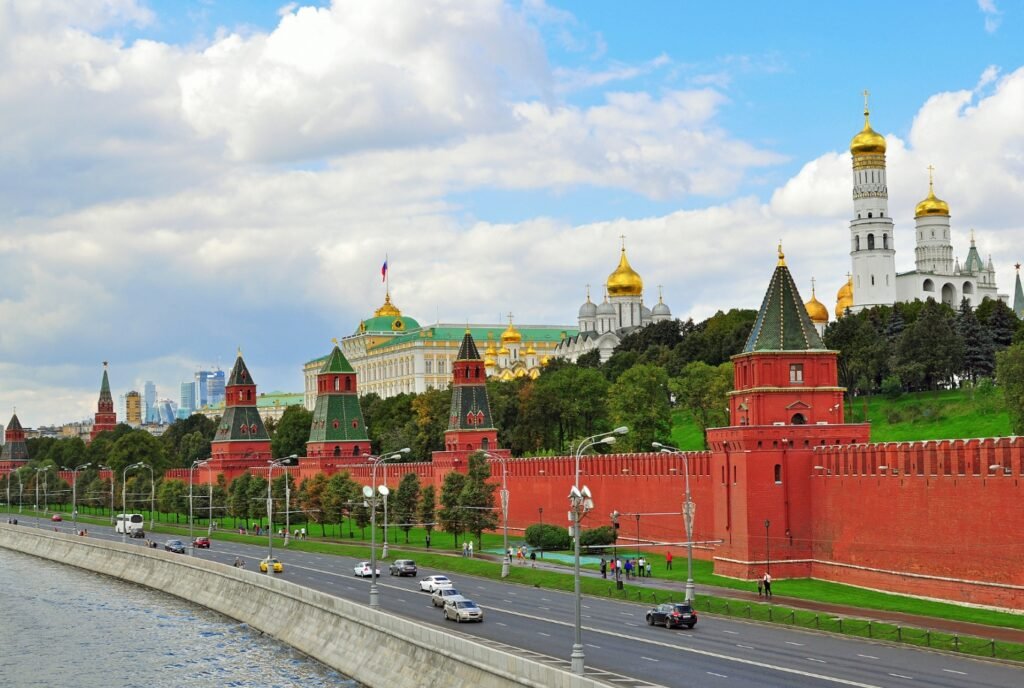
The Kremlin – Armory Chamber
The Armory Chamber is located in the southwest corner of the Kremlin and houses a dazzling collection of treasures accumulated over several centuries.
Visitors to the Armory must enter at designated times, usually following a guided tour or using an audio guide. A quick tour to see most of the important exhibits typically takes about an hour.
It’s best to start your visit from the upper level:
- Room 1: Features silver and gold artifacts from the 12th to the 17th century.
- Room 2: Showcases the famous Easter eggs created by the renowned St. Petersburg jeweler, the Fabergé family. The most notable among these is the Trans-Siberian Railway egg, which includes a gold train with a platinum locomotive and a ruby light.
- Rooms 3 and 4: Display a variety of weapons and armor, including the famous armor of Prince Yaroslav.
- Room 5: Exhibits gifts presented by foreign ambassadors.
- Room 6: Displays the ceremonial gowns worn during the coronation of queens in the 18th century.
- Room 7: The Royal Display Room, featuring the throne adorned with 800 diamonds that once belonged to the tsars, as well as the famous jewels and the “Monomakh’s Cap” made of sable fur.
- Rooms 8 and 9: House royal carriages.
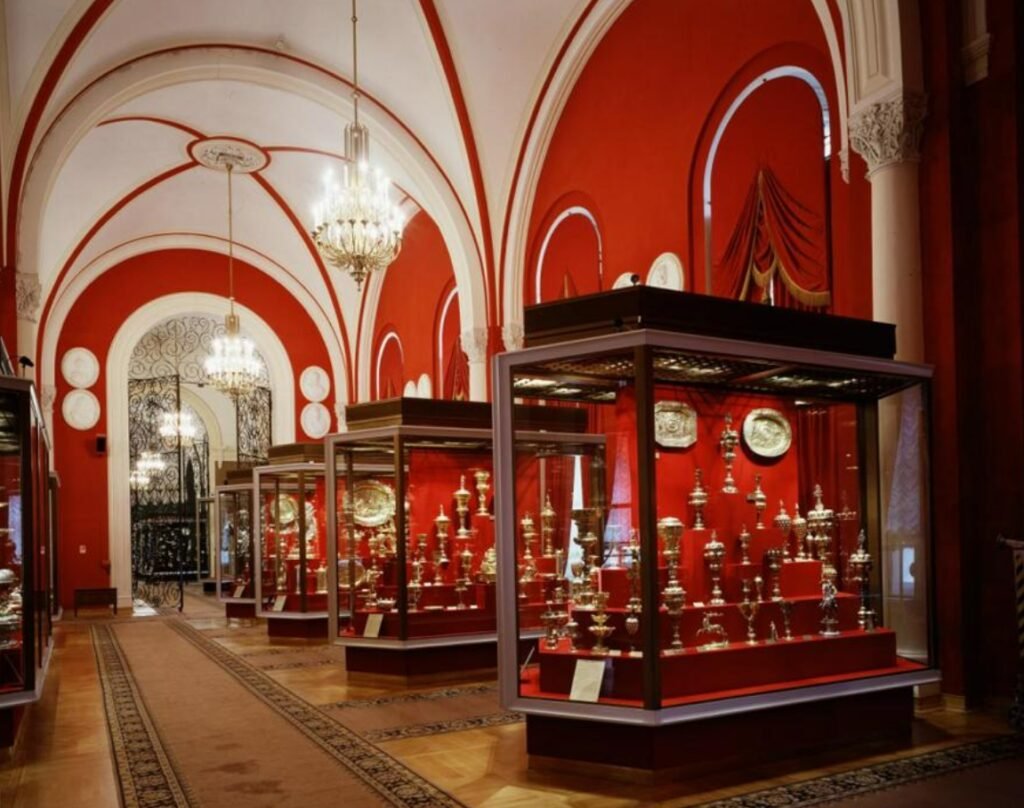


The Kremlin – Diamond Fund Exhibition
The Diamond Fund Exhibition is located within the same building as the Armory Chamber. It features a vast collection of gems, diamonds, and royal jewelry accumulated over several centuries, including the world’s largest sapphire. Among the highlights is a classic 190-carat diamond that once belonged to Empress Catherine the Great.

The Kremlin – Cathedral of the Archangel
The Cathedral of the Archangel is located at the southeastern corner of the square, nestled between Ivan the Great Bell Tower and the Grand Kremlin Palace. This cathedral has historically been the site of tsarist coronations, weddings, and funerals, serving as the primary burial site for the tsars until the capital was moved to St. Petersburg. Built between 1505 and 1508, the cathedral is an example of Russian Byzantine architecture, though its exterior also displays characteristics of Venetian Renaissance architecture.
The Kremlin – Assumption Cathedral
The Assumption Cathedral is situated on the northern side of Cathedral Square at the center of the Kremlin. Its five golden domes are quite striking. The main entrance features a mural of the Virgin Mary facing the square. Visitors enter through the west side of the church, which boasts a bright interior adorned with warm golds, reds, and blues.
In the southeastern corner of the cathedral is a canopied throne, crafted for Ivan the Great in 1551. The intricate carvings on this throne depict the life of Grand Prince Monomakh, leading to its alternate name, the “Throne of Monomakh.”

The Kremlin – Cathedral of the Annunciation
The Cathedral of the Annunciation is located at the southwestern corner of Cathedral Square. To the south is the Chapel of the Archangel Gabriel, which has been converted from a gallery and features a beautifully colorful Orthodox altar.
One of the main attractions is the archaeological exhibition in the cathedral’s basement, showcasing important artifacts from Moscow dating back to the 12th to 14th centuries.
The Kremlin – Patriarch’s Palace
The Patriarch’s Palace was built in the mid-17th century, and a highlight of the visit is the solemn and majestic Cross Hall, which once hosted banquets for tsars and foreign ambassadors. The palace also features an exhibition of royal items, displaying furniture, hunting tools, and precious jewels used by the royal family in the 17th century. The Patriarch’s Palace frequently hosts special exhibitions.
The Kremlin – Ivan the Great Bell Tower
The Ivan the Great Bell Tower is located on the eastern side of Cathedral Square and is the tallest structure within the Kremlin complex. Its two golden domes are prominent landmarks in the area. Before the 20th century, it was prohibited to construct buildings taller than the Ivan the Great Bell Tower in Moscow, which explains the uniform height of older structures.
At the center of the bell tower is the Tsar Bell, a gilded bell weighing 65 tons, named after Patriarch Feodor. Interestingly, the more famous Tsar Bell is not located inside the tower but stands beside it. It is the largest bell in the world, weighing 202 tons, but it has never been rung due to a fire and subsequent casting errors. The Tsar Cannon is located to the north of the bell tower, built in 1586, and features a portrait of its caster, Tsar Feodor.


Alexander Garden
Alexander Garden is a rectangular park located outside the red walls of the Kremlin. It is one of the most popular places for Muscovites to relax and enjoy themselves. The newly constructed Manezh underground shopping mall and square blend seamlessly with the garden, featuring fountains and sculptures throughout.
Within the garden, you’ll find the famous Tomb of the Unknown Soldier, which was completed on the eve of Victory Day in 1967. In front of the tomb stands a torch, with an eternal flame that has burned since its inauguration. The inscription on the tombstone reads: “Your name is known to no one, but your deeds will be remembered forever.” When foreign delegations visit, they usually pay their respects at the soldier’s tomb and lay wreaths. Many couples in Moscow also come here to get married, presenting beautiful flowers to the unknown heroes with a sense of reverence.
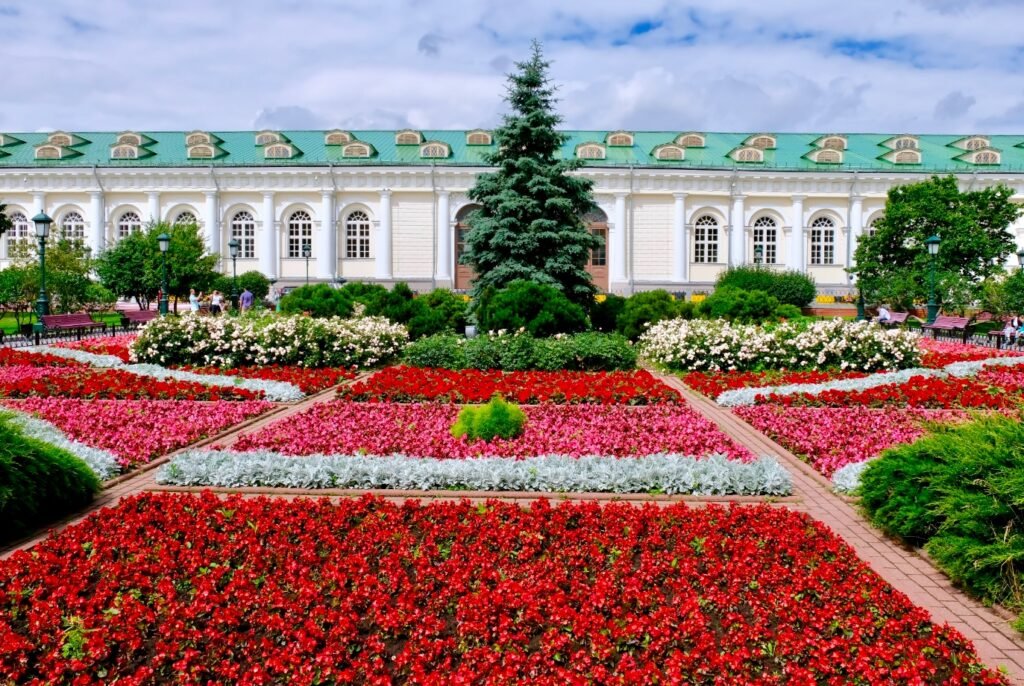
Bolshoi Theatre
The Bolshoi Theatre, often referred to as the “State Academic Bolshoi Theater of Russia,” occupies almost half of Theatre Square and is one of the oldest theaters in Russia, having been built in 1776.
This neoclassical building is adorned with eight ancient Greek Ionic columns at the entrance. Above the portico, you’ll find a sculpture of four majestic horses pulling the chariot of the sun god Apollo, making it one of Moscow’s iconic landmarks. Over its more than 200 years of history, the Bolshoi Theatre has not only witnessed the development of Russian ballet but has also nurtured numerous dance and opera luminaries. Notably, Tchaikovsky’s “Swan Lake” premiered here in 1877.
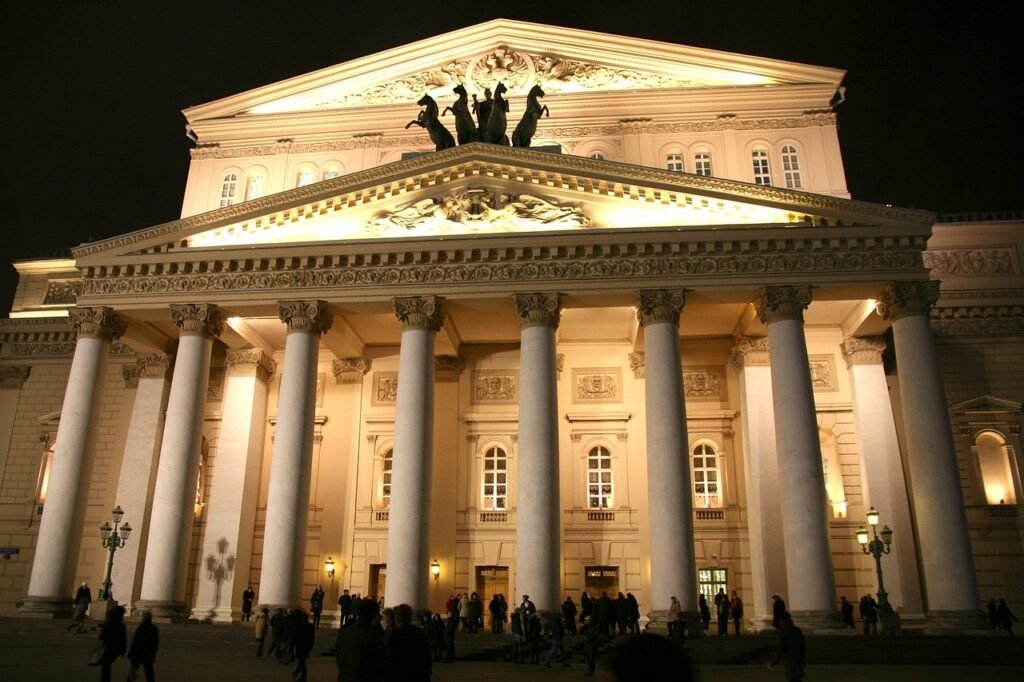
Arbat District
Arbat Street in Moscow is an old street with a history of over 500 years. It connects Arbat Square at the northeast end to Smolensk Square at the southwest end, and in 1985, it became Moscow’s first pedestrian street. Arbat isn’t very wide; at its broadest, it measures about 20 meters. The entire street is paved with cobblestones, making it neat and tidy. On either side, you’ll find classical buildings from the 14th to 16th centuries that are simple yet sturdy, focusing on the practicality of residential areas. This area was once a haven for artists and painters, and many charming, old buildings have been preserved.
Today, Arbat Street is primarily a cultural commercial street, featuring shops that mostly sell antiques, used books, and jewelry. The small shops along Arbat Street line up one after another, offering a wide variety of goods, such as warm ear-flap hats, intricately woven straw shoes, a dazzling array of earrings and pendants, as well as various quirky amulets.
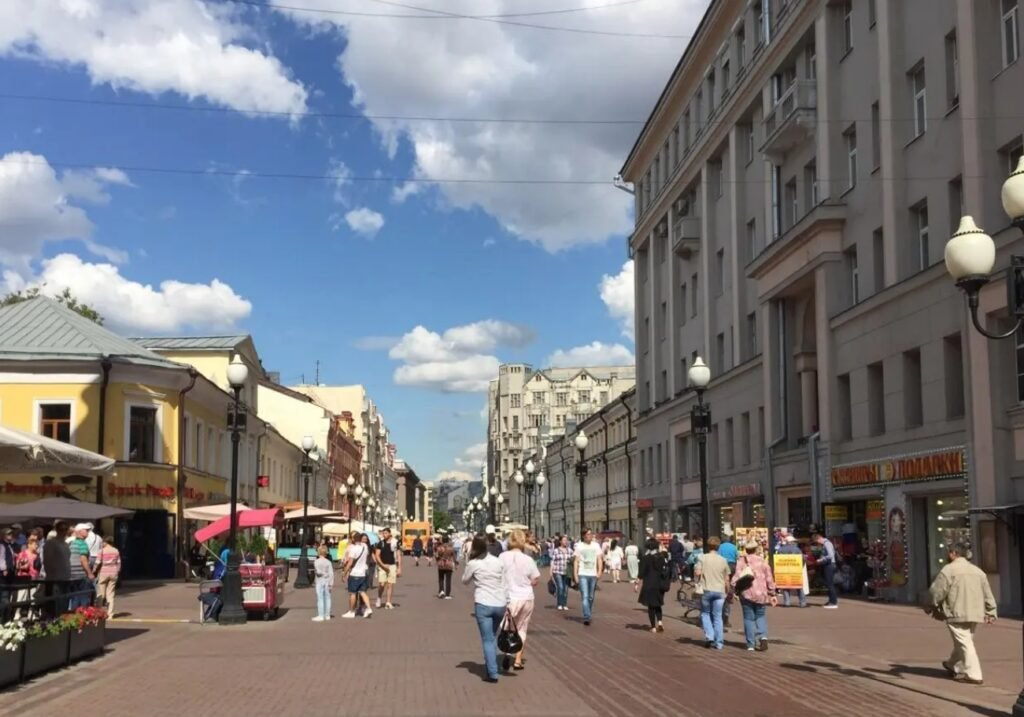
Pushkin Museum of Fine Arts
The Pushkin Museum is arguably the largest collection of foreign art in Moscow. It was established in 1898 and completed in 1912. The museum houses 543,000 works of art from various eras, ranging from ancient Egypt and Babylon to the present day. The museum building features a classical façade with six columns surrounded by a colonnade.
It contains over 3,000 oil paintings by Italian, Dutch, Belgian, German, Spanish, British, French, and American artists. Highlights include Botticelli’s “The Annunciation,” Rubens’s “The Feast of Venus,” Rembrandt’s still lifes, Monet’s “Breakfast on the Grass,” Degas’s “Dancer before a Photographer,” Van Gogh’s “The Prisoner,” Picasso’s “Girl Standing on Earth,” and Matisse’s “Goldfish and the Dance” mural.
In addition to the oil paintings by foreign artists, the museum showcases ancient Egyptian artifacts, Greek vases, and Italian icons from the 8th to the 15th centuries. Notable features of the museum include Rodin’s marble statue “Eve,” replicas of Michelangelo’s “David,” and many other famous sculptures.
In 1937, the museum was named the Pushkin Museum in honor of the great Russian poet Alexander Pushkin.
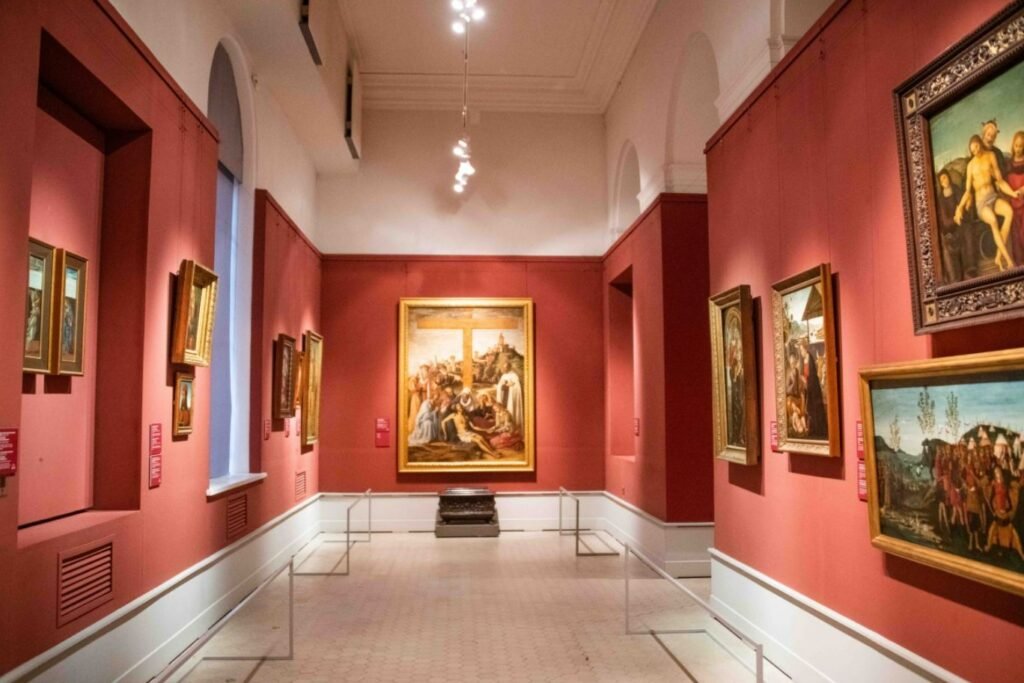

Cathedral of Christ the Saviour
The Cathedral of Christ the Saviour in Moscow was originally built to commemorate the victory over Napoleon in the War of 1812. The design was completed in 1831, and the sculptures took 17 years to create, while the murals took 23 years to paint, resulting in its final completion. The interior features intricately crafted murals and icons that create a grand sense of space. The solemn murals and iconography depict the battles against Napoleon and the triumph of Orthodoxy.
Inaugurated in 1887, this cathedral is the largest in Moscow, boasting five gilded onion domes, with the central dome reaching a height of 102 meters.
After the October Revolution, the Moscow city government demolished this valuable ancient structure in 1931, intending to construct the Palace of the Soviets, which was to stand over 200 meters tall, with a statue of Lenin on top measuring 40 meters. However, after digging the foundation, significant design flaws were discovered, leading to the project being halted. Instead, an outdoor swimming pool was creatively built on the site, which remained warm enough to produce steam even in cold weather.
After significant political changes, the Moscow city government decided in 1994 to reconstruct the Cathedral of Christ the Saviour on the same site. It took six years and 300 million dollars to complete, effectively restoring history to its state as of 1931.

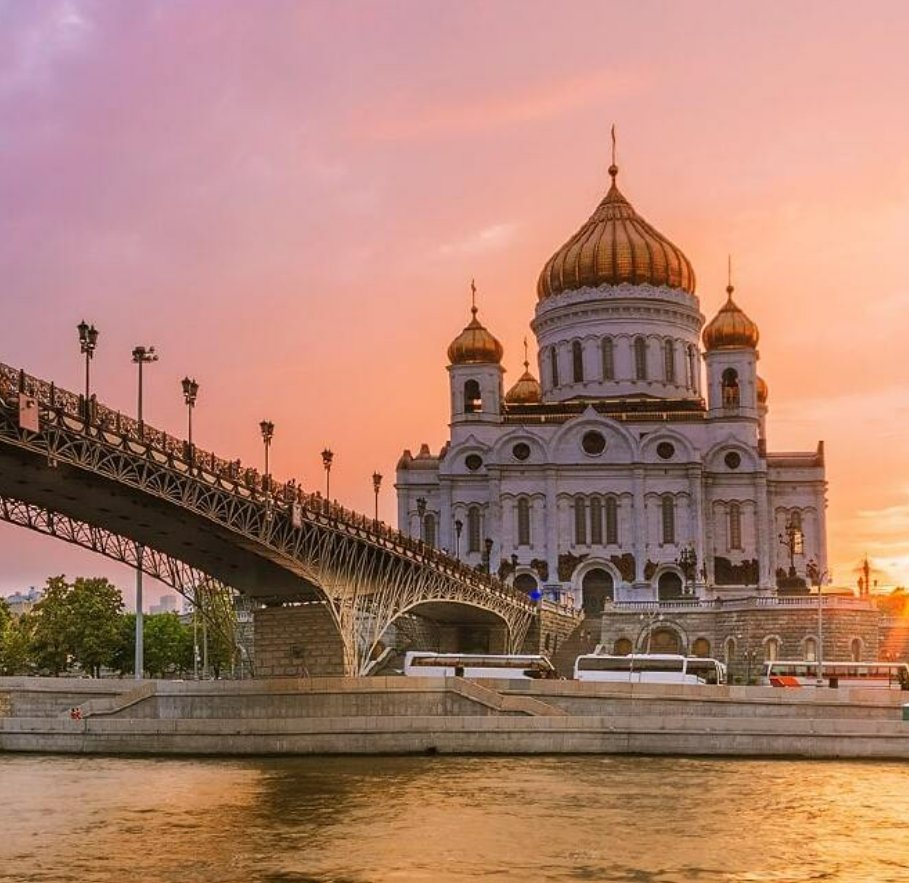
Novodevichy Cemetery
Novodevichy Cemetery, established in the 16th century, is located in the southwestern part of Moscow. Initially, it served as a resting place for church leaders and nobility. By the 19th century, it became the final resting place for many of Russia’s renowned intellectuals and prominent figures. Covering an area of 7.5 hectares, the cemetery is the final resting place for over 26,000 notable individuals from various historical periods in Russia, making it one of the three major cemeteries in Europe.
Many figures who played significant roles in the development of Russian history are interred here, with many names that are now familiar to us, such as Anton Chekhov, Nikolai Gogol, and Vladimir Mayakovsky. Here, the souls of the deceased blend seamlessly with the artistry of the tombstones, creating a unique Russian cemetery culture.
Today, large numbers of Muscovites visit the cemetery daily, as if spending just a moment here can stretch and relax their tightly wound spirits, reigniting the candle of hope in their otherwise mundane lives. There seems to be a certain magic here that draws generations to come and pay their respects.
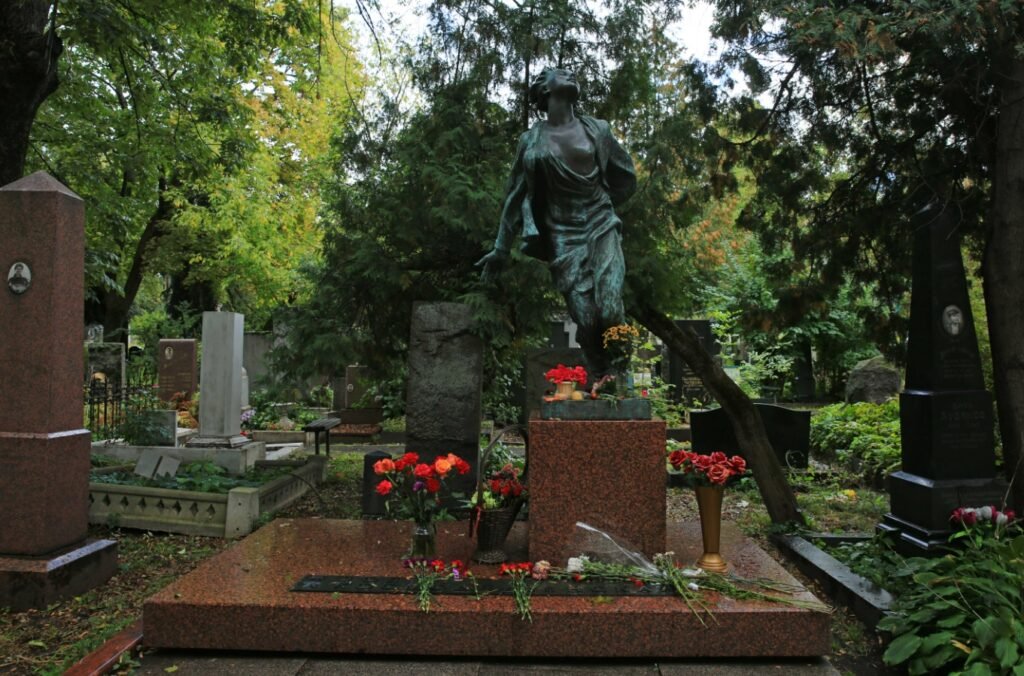
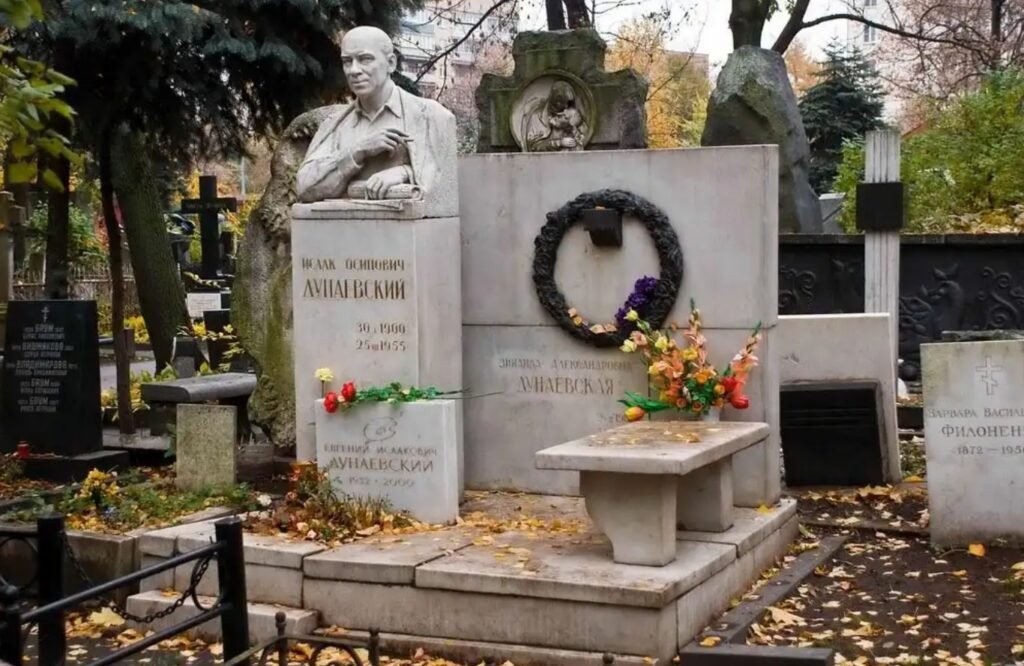
New Novodevichy Convent
As a UNESCO World Heritage site, New Novodevichy Convent is one of the most beautiful and harmonious architectural landmarks in Moscow, as well as one of the most famous monasteries in Russia. It is one of the grandest religious complexes in the city, second only to the Kremlin in terms of historical significance.
Located about 4 kilometers southwest of the Kremlin and near the banks of the Moskva River, this convent occupies a strategic position leading into Moscow. As a result, it also served as a fortress, playing a crucial role in defending the capital. The high towers and walls, adorned in red and white, give the convent the appearance of a medieval castle.
New Novodevichy Convent was established in 1524 by Vasily III to commemorate the return of the ancient city of Smolensk to the Russian Empire from Lithuanian control. The oldest stone church within the complex is the Smolensk Cathedral. Its sturdy stone structures have survived numerous wars, including the Great Fire of Moscow in 1812.
Before the 18th century, the convent was under royal protection and enjoyed the reputation of being a “royal monastery.” Its architectural style is elegant and magnificent, featuring a striking combination of white stone details and pink brick walls, creating a prominent pink façade. In 1598, the coronation of Tsar Boris Godunov took place here; by the end of the 17th century, Peter the Great and his half-sister Sophia engaged in a power struggle, which ended with Peter’s victory. Sophia was forcibly shaved and made a nun here, and she died in the convent in 1704.
The main buildings of the convent include the Smolensk Cathedral and a charming octagonal bell tower. Inside the cathedral, visitors can admire 16th-century oil paintings and icons from the 17th and 18th centuries. The bell tower, crowned with a gleaming gilded dome, is a prominent sight visible from many locations in Moscow.
Within the convent grounds is the New Novodevichy Cemetery, which became a burial site for notable figures starting in 1923. Famous individuals such as Gogol, Chekhov, Ostrovsky, and Khrushchev are interred here, with nearly every tombstone serving as a work of sculptural art.
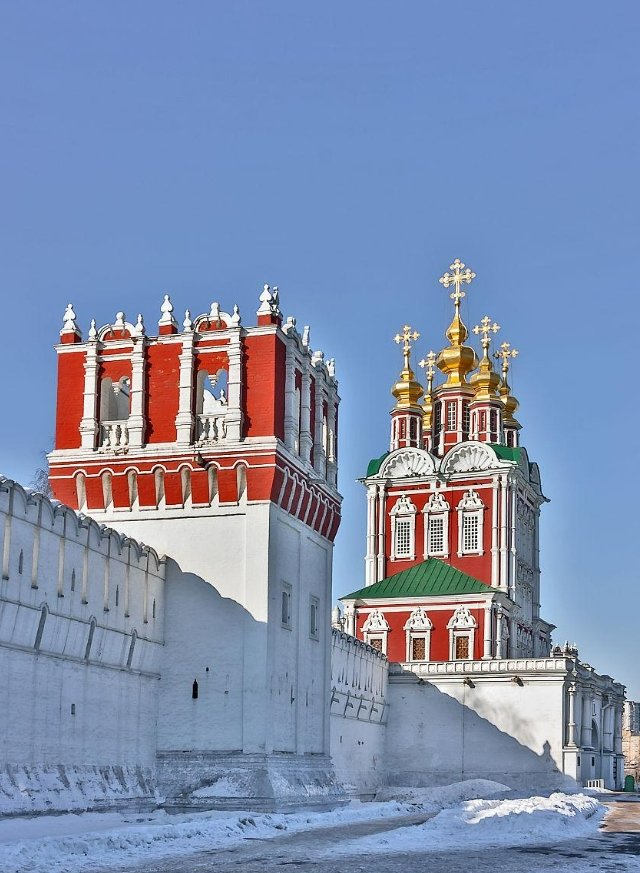

Tretyakov Gallery
The Tretyakov Gallery houses genuine treasures of Russian art and is an unmissable attraction in Moscow. The museum boasts nearly 140,000 pieces in 62 exhibition halls, showcasing paintings from the 11th century to modern Soviet artists. The collection began on May 22, 1856, when Russian merchant Pavel Tretyakov purchased an oil painting titled Conflict with Finnish Smugglers, marking the founding day of the gallery.
Above the museum’s entrance is an ornament of the old city crest of Moscow, and in front stands a statue of Tretyakov himself.
The majority of the artworks in the gallery are from the 19th century, which is considered the peak period of classical Russian painting. This era saw the emergence of many outstanding artists and works, with Repin, Surikov, and Vasnetsov as notable representatives. Their classic works of Russian realism vividly depict the lives of the people, and many exceptional portraits, historical scenes, and landscapes are regarded as masterpieces.

Gorky Park
Gorky Park, also known as the “Culture Park,” features a botanical garden and amusement area, making it a great place for relaxation for Moscow residents. The main entrance to the park is quite grand, adorned with colorful flags, accompanied by the joyful sounds of traditional fairs held frequently within the park.
In 2011, the park underwent renovations and has since become a trendy gathering spot. In addition to new cafés with unique atmospheres, there’s an outdoor cinema, free Wi-Fi throughout the park, and regular exhibitions.
Nikolskaya Street
This is the busiest street in the city of Grozny and was once the commercial center. Many buildings from the 17th and 18th centuries still stand along the street. Notable landmarks include the old monastery at No. 9 (founded in 1661) and the religious conference printing house at No. 15, where it is said that Russia’s first printed work, “The Apostle,” was produced.
Vavaka Street
The architecture along Vavaka Street is worth a visit. Here, you can find the pastel-pink St. Barbara’s Church, which has been converted into a government office. There’s also a 16th-century-style old British courtyard that once served as a residence for the first batch of British diplomats and merchants in Russia.
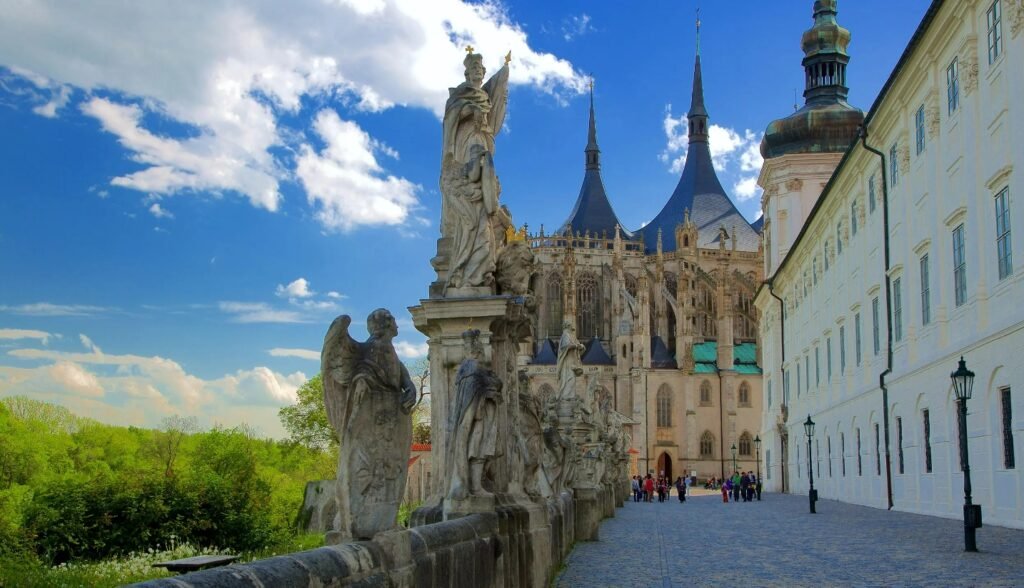
Ostankino Manor
Ostankino Manor represents the pinnacle of Russian estate culture. The manor was built over a hundred years, starting in the 1890s and completed in the late 19th century. The pink and white palace served as the summer residence for Count Sheremetyev. The interior preserves its original decorations and furnishings, with the most striking feature being the artistic parquet flooring. The extensive use of intricately carved gilded wood gives the hall a splendid shine. Crystal chandeliers, furniture, and other decorative items remain in their original positions. Ostankino Palace is the only remaining theater in Russia that still has an 18th-century stage, audience area, dressing rooms, and some mechanical equipment. In 1918, the manor became a national museum, where visitors can not only see authentic 18th-century interior decorations but also hear music from that era and operas from the Sheremetyev Theater repertoire. The Zaryadye noble residence is the only building left from the grand estate of the Romanov family.
Accommodation Guide:
Hotels in Moscow are categorized by star ratings, offering a wide range of options, including many that are converted from historic buildings, providing a unique charm. The “luxury” hotels in the city center are typically located in transitional areas that provide easy access to major attractions, commercial, and trade centers. Most of the 4-star and 5-star luxury hotels are international chain hotels, such as Marriott, which offer comprehensive facilities and services, but at a steep price. Three-star and budget chain hotels are also common. Many of the older hotels have been renovated to meet international standards in appearance and interior decor. Budget hotels are a comfortable choice for travelers in Moscow due to their high cost-performance ratio.
Moscow also has youth hostels, family-run guesthouses, and short-term rental options that are very popular with backpackers, with the biggest advantage being their affordability. Some youth hostels are well-located near attractions and in the city’s historical center, and they come with complete facilities, with some even offering kitchens. Family-run guesthouses are more suitable for tourists planning a longer stay in Moscow. These accommodations vary widely, from luxury apartments to budget options, with prices determined by room size and location. It is advisable to choose residences with security to ensure safety; otherwise, there may be concerns about security, including encounters with the Russian police for inspections. If opting for a room in an estate outside the city, the orientation of the room should also be a consideration.
Accommodation Tips: Russia’s metro system is considered one of the most efficient in the world. Staying near a metro station is a great option. The following metro stations lead to popular tourist attractions:
Red Line:
- Moscow University Station (Московский Университет): This is the nearest station to the Chinese Embassy.
- New Maiden Convent Station (Смоленский): Also known as the “Celebrities’ Grave” station, it leads to the New Maiden Cemetery.
- Lenin Library Station (Библиотека имени Ленина): This station leads to the Kremlin, where you can transfer to the gray line of the metro. Exiting here will bring you to Arbat Street.
- Red Square Station (Краснопресненская): This station leads to Red Square.
- Oil Painting Market Station (Парк Культуры): This is the interchange station between the red line and the brown line, with several beautiful platforms located on the brown ring line.
- Kropotkinskaya Station (Кропоткинская): This station leads to the Pushkin Museum of Fine Arts. Before 1955, it was named the Soviet Palace, and it features architecture that reflects its significant political history, recorded in the architectural history of the former Soviet Union.
Brown Ring Line:
Many excellently designed platforms are located on this line.
- Kiev Station (Киевская): This station is the interchange between the deep blue line and the brown line and leads to Kiev Railway Station. You can also board a cruise on the Moscow River here.
- Friendship Mall Station (Дружба народов): Exiting to the green line leads to the Belarusian Railway Station, which has international trains to other countries.
- Peace Avenue Station (Проспект Мира): This is where you can transfer to the orange line, which leads to the VDNH (Exhibition of Achievements of National Economy), featuring the famous “Little Golden Man” fountain at the All-Russian Exhibition Center.
- Komsomolskaya Station (Комсомольская): This is the transfer station between the red and brown lines. The Komsomolskaya ring station is very beautiful, with many historically significant photographs adorning the ceiling.
- Mayakovskaya Station (Маяковская): This metro station is considered one of the most beautiful in Moscow.
Green Line:
- Red Square Station (Театральная): The name of the transfer station on different colored lines may vary, but they will all lead to the same destination; only the distance upon reaching the surface may differ.
- Belorusskaya Station (Белорусская).
Orange Line:
- Peace Avenue Station (Проспект Мира): Leads to the Exhibition Center (ВДНХ) at the All-Russian Exhibition Center.
- Revolution Square (Площадь Революции).
- Flea Market (Ивановская).
Light Blue Line:
- Victory Park Station (Парк Победы): This station leads to Victory Park and the Kremlin.
- Alexander Garden Station (Александровский сад).
Food Guide:
Cuisine can greatly reflect the characteristics of a nation. The Russian people are known for their robust and straightforward nature, with a culinary style that is rich in flavor and high in calories.
The main staples of Russian cuisine include bread, milk, potatoes, beef, pork, and vegetables. Rye bread, caviar, butter, sour cream, pickled cucumbers, salted fish, and ham are also popular food items. Breakfast typically consists of ham or cheese sandwiches paired with tea, coffee, or milk. Lunch usually consists of three courses, starting with cold appetizers, followed by a hearty soup that often includes diced potatoes, various vegetables, meat, or fish. After the soup, the second course is served, which usually consists of fish or meat, accompanied by side dishes such as fried potatoes, mashed potatoes, greens, pickles, or pasta. Bread is a common component in the first two courses. The third course is not a dish but usually consists of tea, coffee, juice, and some cakes or pastries.
While Russian cuisine is fundamentally simple, it has a strong openness and adaptability. Russians have a tendency to embrace influences from various cuisines. Whether it’s Chinese dumplings, German sausages, British steaks, Tatar lamb skewers, Ukrainian borscht, or Olivier salad, these dishes have been introduced and transformed into popular Russian fare.
Notable Russian food specialties include red and black caviar, various sausages, ham, red fish, salted fish, pickled mushrooms, pickled cucumbers, salads, and dairy products. Caviar and various sausages are particularly exquisite delicacies; it is common to enjoy black sturgeon caviar paired with crisp white wine, accompanied by a slice of hearty rye bread. Caviar is not very expensive locally and can be found in most supermarkets. Russians also enjoy cold drinks and desserts, even eating ice cream in temperatures below -20°C, as well as sweet cakes that can be quite cloying. Vodka is a source of national pride, and most Russians have a good tolerance for alcohol.
The staple food is usually bread made from rye or wheat flour. Black bread is a favorite among Russians and is often served to guests. This type of bread has a dense texture and a slight sour taste.

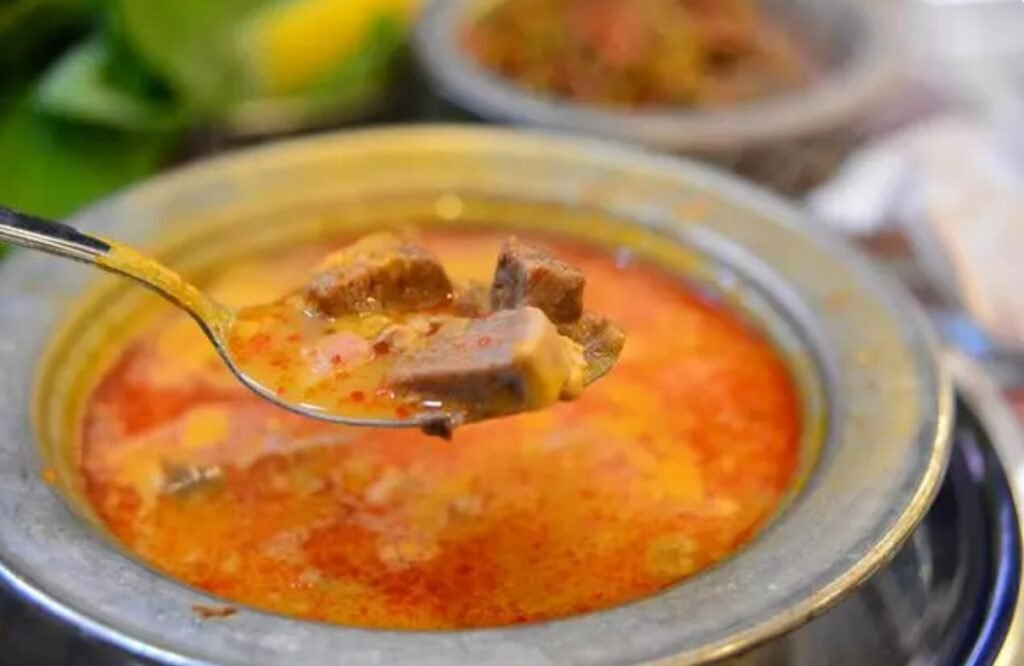
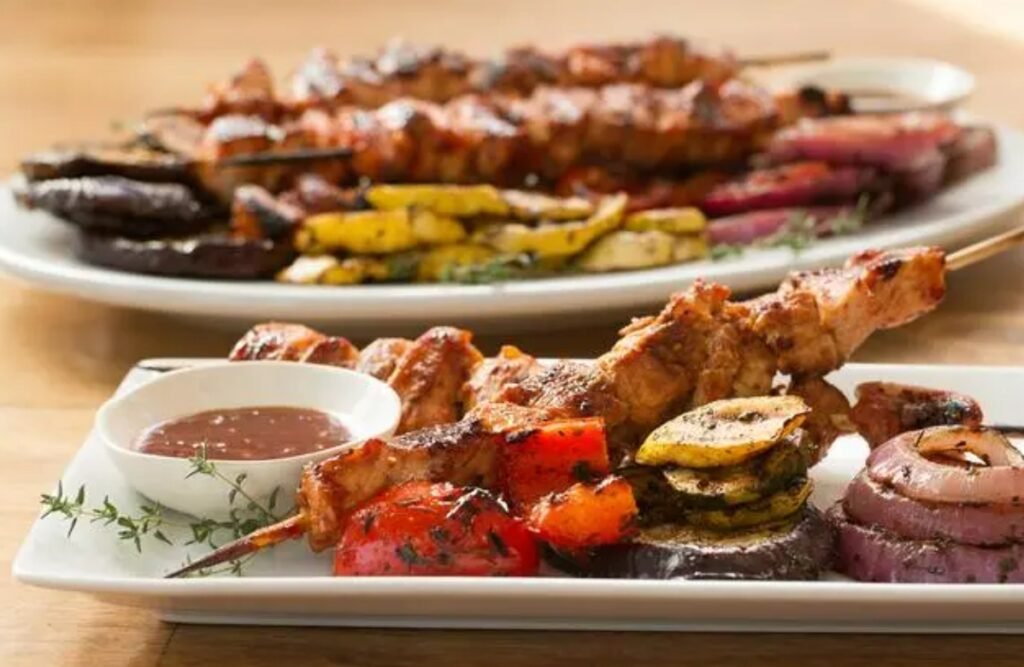
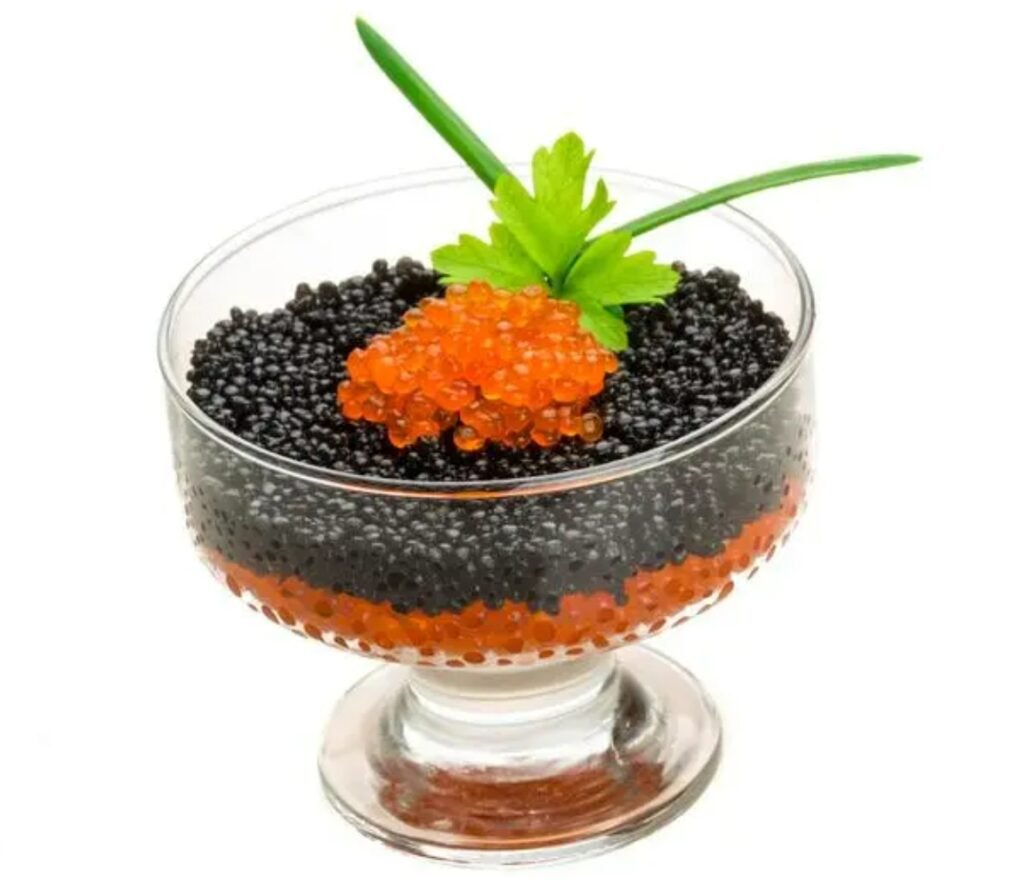
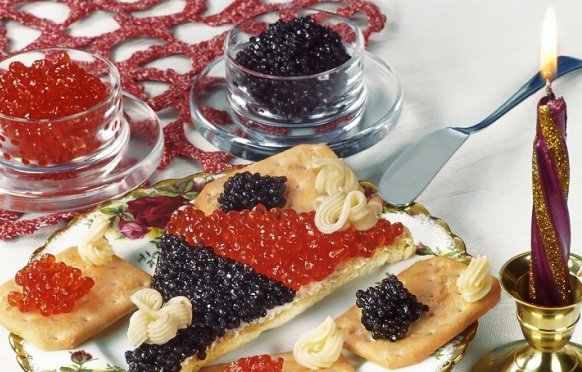
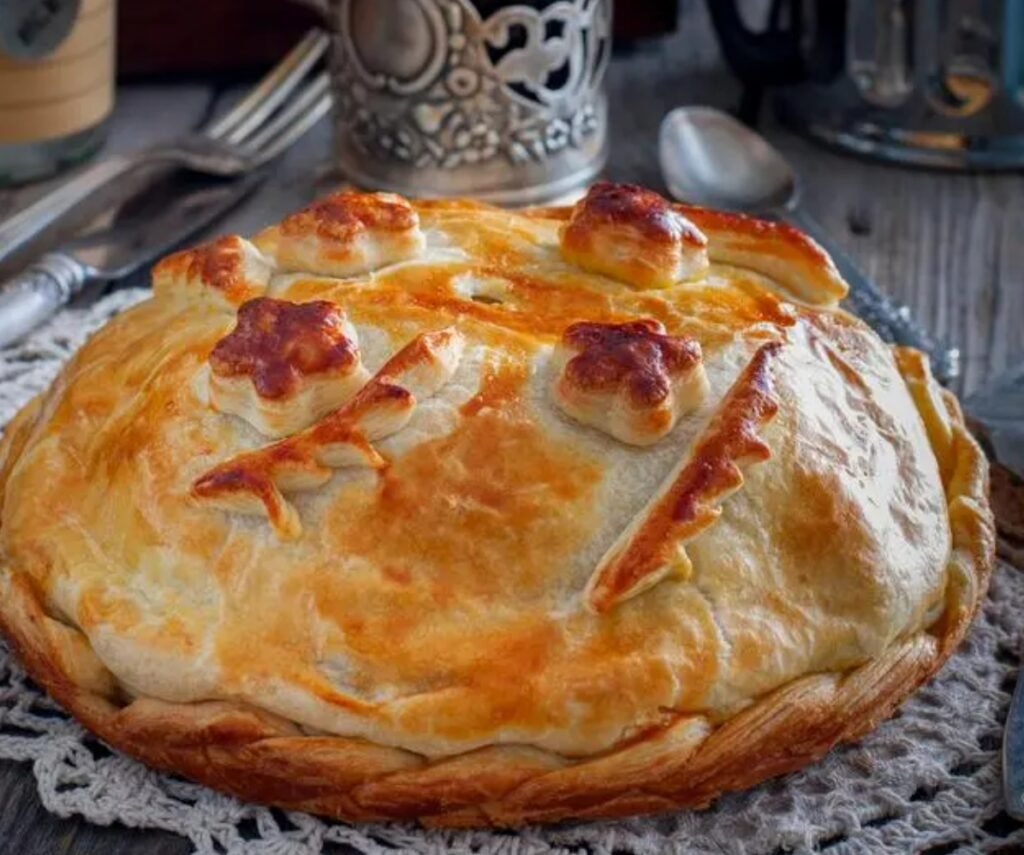

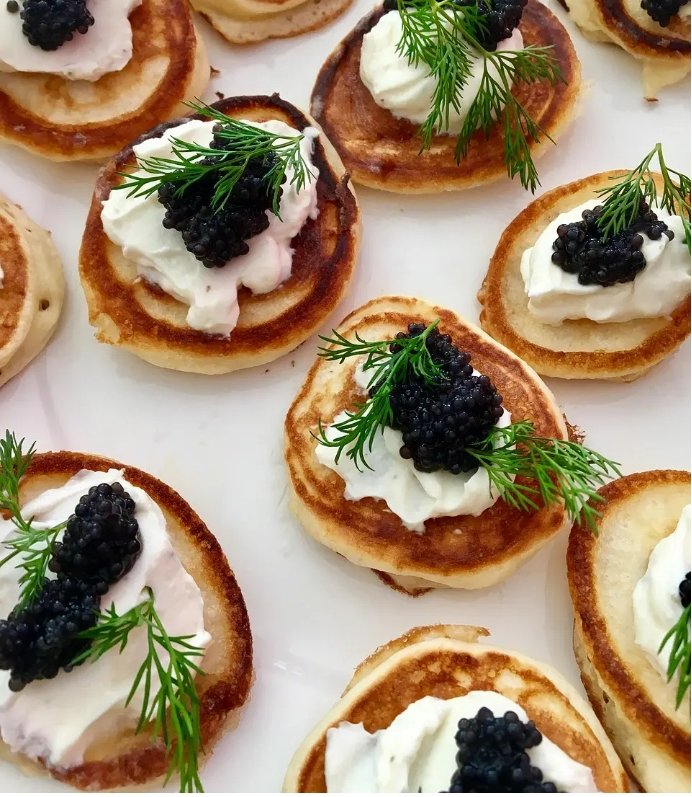
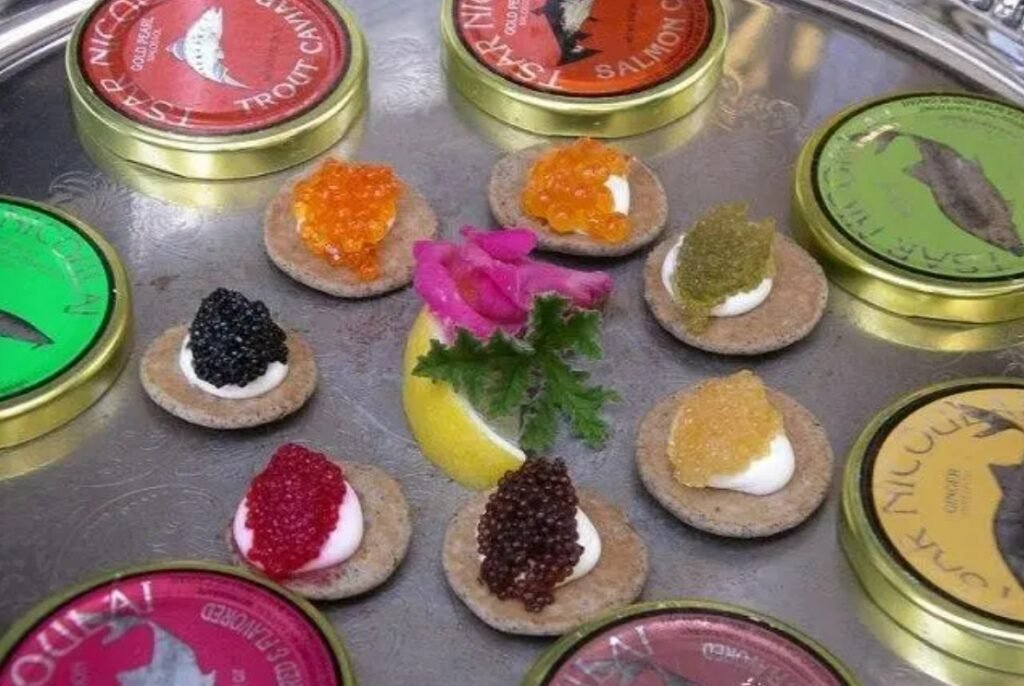
Travel Itinerary Guide:
Since Moscow’s main attractions are concentrated within the “Second Ring,” the focus of your visit should begin in the city center—Red Square and the Kremlin. If you have more time, consider incorporating various attractions that radiate outwards from Red Square as the starting point; if you can stay in Moscow for over two days, a visit to the nearby Golden Ring towns would be worthwhile. For a comprehensive experience of Moscow, a week is a suitable duration.
4-Day Itinerary Details:
Day 1: Dedicate the entire day to Red Square and the Kremlin (avoid scheduling this on Thursday), as there is so much to see here! After breakfast, head to St. Basil’s Cathedral, located on the south side of Red Square. Make sure to take plenty of photos in front of this fairytale-like, colorful church. Next, visit Lenin’s Mausoleum, the GUM State Department Store, and the State Historical Museum. It’s best to finish lunch before noon so you can enter the Kremlin as early as possible. Aside from the Cathedral Square area, the Armory Chamber is a must-see. After leaving the Kremlin, head to Sparrow Hills, and take a stroll around Moscow State University. Have a good dinner and rest, as this day will require a lot of energy.
Day 2: Visit the Tretyakov Gallery or the Pushkin Museum of Fine Arts, both of which house world-class treasures. In the afternoon, relax in Gorky Park and experience the famous Moscow nightlife in the evening.
Day 3: If you’re in town on a Saturday, head to the “Antique Flea Market” early in the morning to pick up some souvenirs. After that, visit the New Novodevichy Convent and Cemetery, where many of Russia’s cultural figures are laid to rest. In the evening, enjoy a circus performance.
Day 4: Start early for a trip to a Golden Ring town—Sergiev Posad—to visit the famous Trinity Lavra of St. Sergius. Return in the afternoon to rest.

